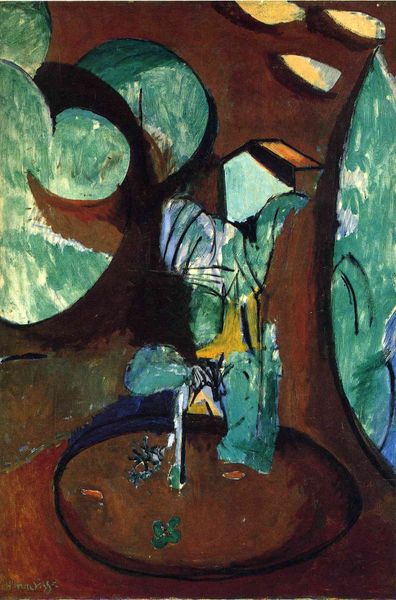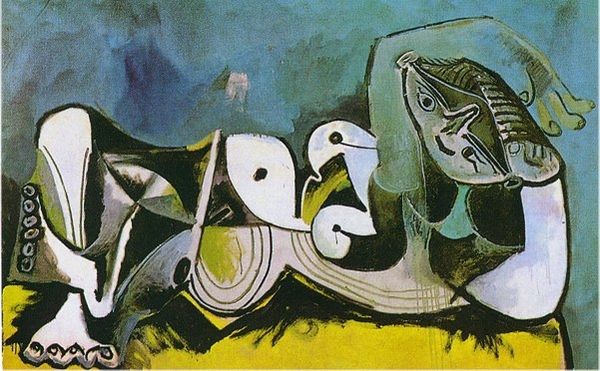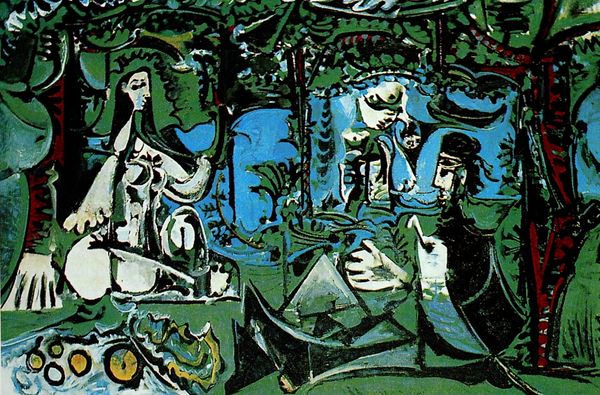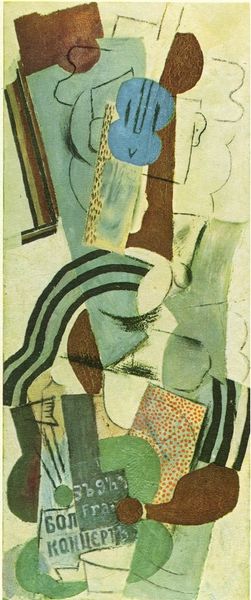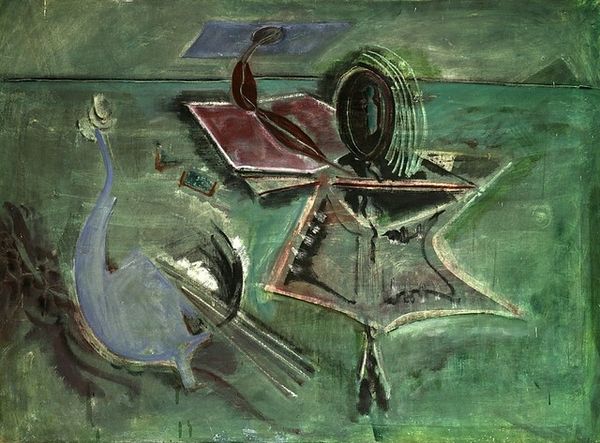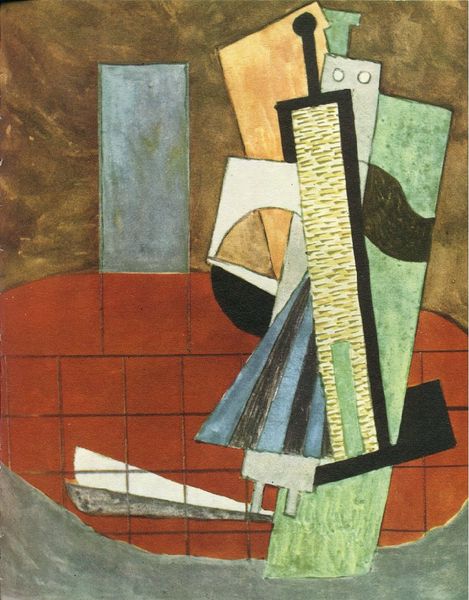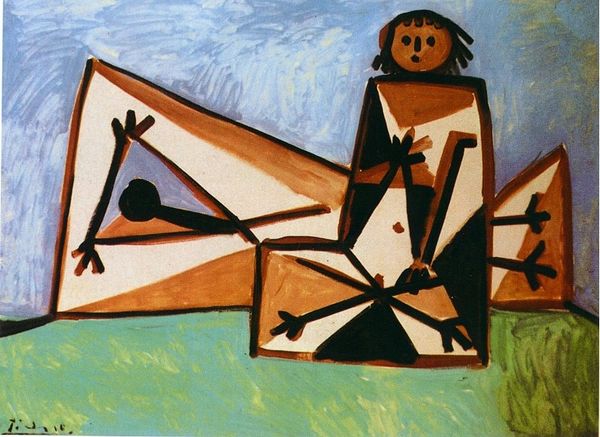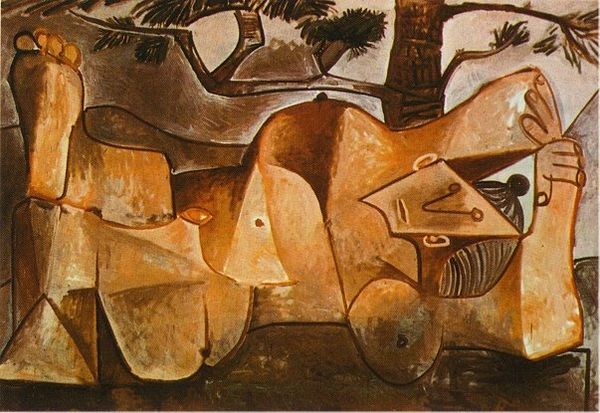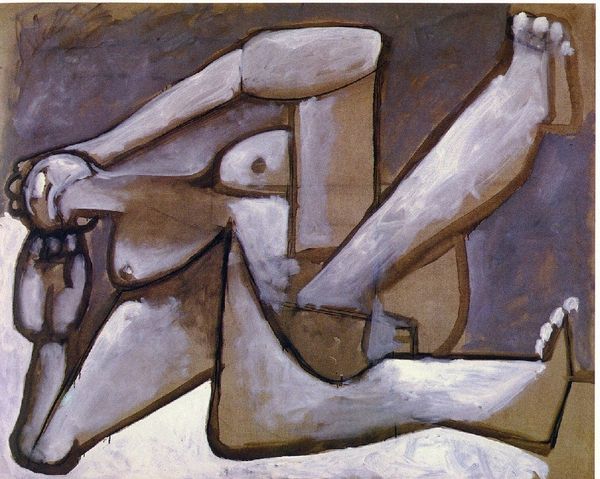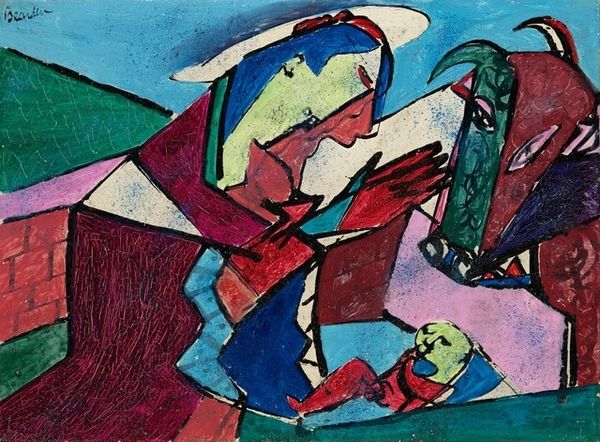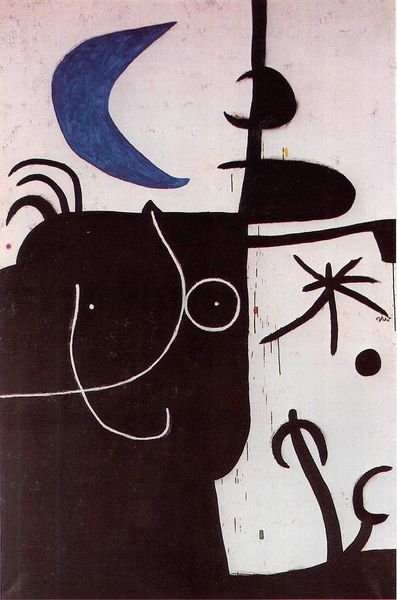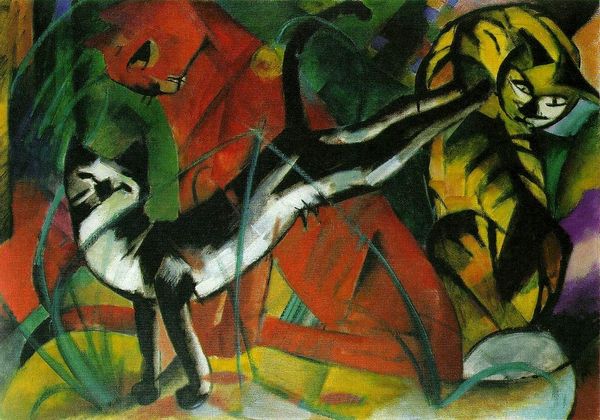
painting, oil-paint
#
portrait
#
cubism
#
abstract painting
#
painting
#
oil-paint
#
landscape
#
geometric
#
modernism
Dimensions: 130 x 195 cm
Copyright: Pablo Picasso,Fair Use
Editor: Okay, so here we have "Spring" by Pablo Picasso, painted in 1956, using oil on canvas. It’s definitely got that Picasso flair, deconstructed forms but surprisingly…pastoral? How would you interpret a painting like this through its time period? Curator: Well, that title, “Spring,” placed alongside these fractured forms compels us to consider the socio-political landscape of post-war Europe. In what ways does Picasso perhaps challenge the very notion of an idyllic spring through a cubist lens? Editor: That’s interesting… It's like the joy of the season is filtered through a fractured reality. Were there other artists engaging with similar themes of fractured idylls? Curator: Absolutely. The trauma of the war led many artists to question traditional representations of beauty and harmony. Picasso's use of cubism reflects a broader trend of deconstruction, echoing the instability felt throughout society. Look at the disjointedness of the goat, positioned right beside the family...do you think there’s a social statement there? Editor: Maybe… Is the disruption of these established elements representative of how traditional institutions were perceived? Curator: Precisely. The family alongside the goat creates disruption and highlights the way post-war art critiqued dominant societal structures and artistic conventions, urging viewers to confront uncomfortable truths. Editor: I never would have considered it going in… now I see how seemingly abstract art can engage with critical issues of its time. Thanks! Curator: My pleasure! It’s this interplay between form and context that gives art its lasting power.
Comments
No comments
Be the first to comment and join the conversation on the ultimate creative platform.
